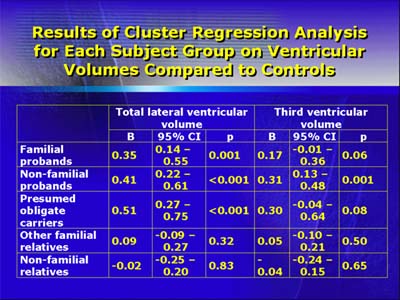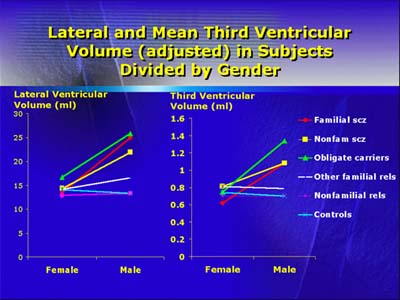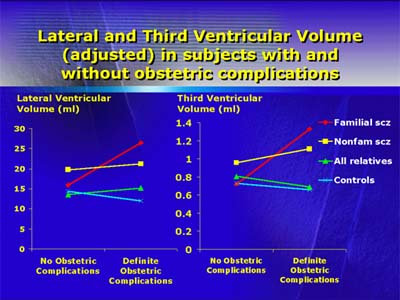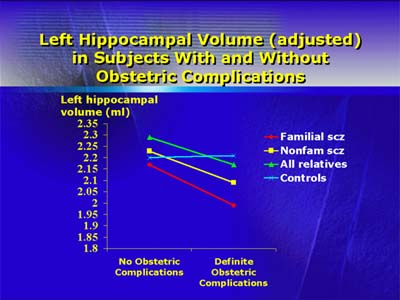A meta-analysis of 58 structural magnetic resonance imaging studies revealed a smaller (2% reduction) mean cerebral volume in subjects with schizophrenia compared to volumes in non-schizophrenic controls.
The mean total ventricular volume of subjects with schizophrenia was greater (26% enlargement) than in non-schizophrenic controls.
Dr. McDonald asked the question, "What causes these structural brain changes in schizophrenic persons?" and proceeded to address this issue.

Dr. McDonald began by discussing the Maudsley twin studies, which investigated monozygotic twin pairs discordant for schizophrenia.
These studies detected abnormal brain structures in the affected twin compared with the healthy co-twin.
In addition, affected twins from discordant twin pairs exhibited more abnormal brain structure compared with those found in monozygotic pairs concordant for schizophrenia.

Dr. McDonald investigated whether early environmental factors such as obstetric complications contributed to brain abnormalities through the analysis of volumetric measurements of certain brain structures in 35 probands, 63 familial relatives, 31 non-familial probands, 33 non-familial relatives, and 33 controls.
Dr. McDonald also collected data on any obstetric complications in the births of these subjects. He concluded obstetric complications interact with genetic risk to produce more prominent ventricular enlargement in familial probands.
Left hippocampal volume reduction was largely related to obstetric complications, and it showed no evidence of gender interaction.

-->
Dr. McDonald's investigation also examined the brains of healthy relatives within families with two or more schizophrenic members.
The results show enlargement in ventricular volume in proportion to genetic risk similar to that found in their affected kin.
Ventricular enlargement was largely confined to male probands and to unaffected male relatives.
Dr. McDonald concluded that these changes in brain structures may be genetically transmitted, perhaps by expression of gender-specific genes.
In addition, he noted that the appearance of this brain structure (large ventricular volume) does not itself confer psychosis.

In contrast, well relatives of non-familial schizophrenic patients did not exhibit these changes in brain volume.
Dr. McDonald suggested ventricular enlargement found in the schizophrenic members of such families may have arisen for non-genetic reasons.
Dr. McDonald concluded, "like schizophrenia itself, brain deviations associated with schizophrenia have contributions from genetic and environmental factors as well as gene-environment interactions."